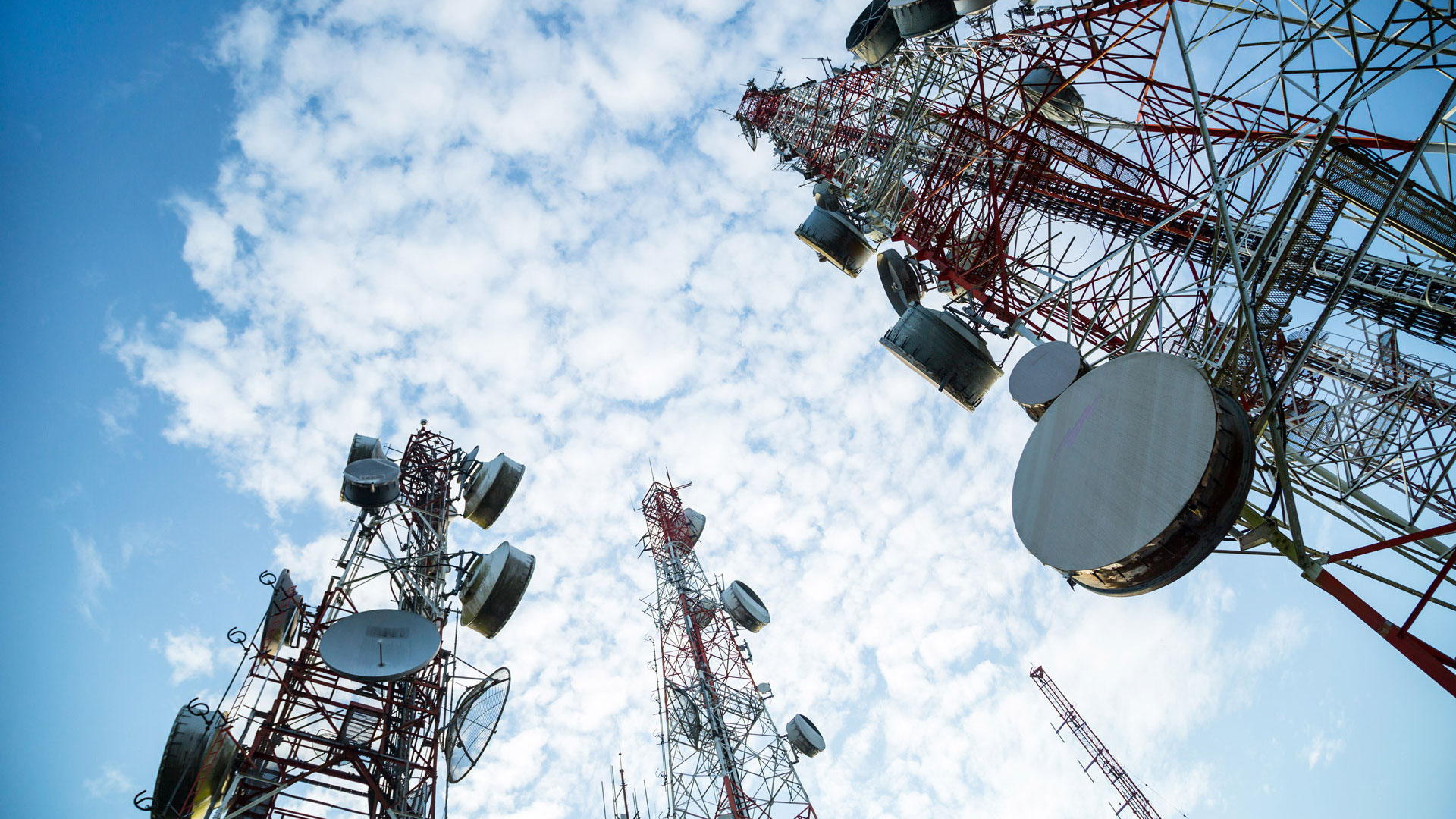Once upon a time, instant communications were unheard of. If you wanted to exchange loving words with your beau, letters could take days or even weeks. Fast-forward to the future, and now we can all reach the people we love in an instant. Even better still, we can reach out to them while we’re on the move.

We’ve come a long way in telecommunications and appears we have further to go still. So, how did the past compare to today? And, what does the future hold?
Telecommunications Past: It Started with the Cavemen
If you thought telecommunications was a relatively new invention, you thought wrong. In the strictest interpretation of the word, telecommunications applies to any attempt to communicate over a distance. Our cavemen ancestors achieved this with smoke signals, but they probably attracted predators in the process.
Persian emperors kickstarted mail in the 6th century BC. Around the 15th century, a shipping signaling system named semaphore came into play. As for telephones, they started in their most rudimentary form in 1672. The first telephone slipped into consciousness when a man named Robert Hooke discovered he could communicate using a wire, an earpiece, and a mouthpiece. Was Hooke aware of how his discovery could evolve? Possibly not.
In 1838, electrical telegraphs hit the scene. With wires that spread across great distances, messengers would relay their words using Morse code. By the late-19th-century, Transatlantic telegraphs were a thing.
In 1876, the hero of our story, Alexander Graham Bell, invented the first telephone. With all his friends mocking him, he successfully created a telephone and moved onto wireless calls in 1880. In January 1915, Bell successfully placed a coast-to-coast call to his assistant.
Surprisingly, the first videophones were trialed in 1930. By 1946, the limited capacity of mobile phones was available for some cars.
In 1973, the first mobile phone hit the scene with an astonishing 30 minutes of capacity. By 1983, both mobile phone networks and the Internet existed.
By 1998, handheld satellite phones were becoming more common. Today, the phones we use are slimmer than ever and can do more than Bell could have imagined. With the Internet and phones working side-by-side, communication has come a long way.
Telecommunication in its Present State
Unlike in 1998, it’s more common for an Australian to own a mobile phone than to not own one. Around 88% of the Australian population owns a smartphone. That means 88% of the Australian population can browse on the go, shop from wherever they like, and communicate with their friends and family using a number of apps. Across the country, 4G availability is at around 90% and is continuing to grow steadily.
Like many other countries, Australia’s population is veering away from landlines. In 2017 alone, 6.67-million people kissed goodbye to their landline connections and welcomed in a mobile-only life. This statistic is hardly surprising, as smart mobile phones have become more affordable than ever.
And how are Australians choosing to use their mobile phones? Well, an impressive 7-million are active on Whatsapp. A little under 6.5-million are choosing to use Snapchat. As for Instagram, it attracts 9-million Australian users each month. The social network that reigns supreme is Facebook, with 15-million Australians using it.
Like a lot of nations, Australia has fully embraced mobile technology and is making the most of it. Smartphones are giving people the opportunity to power their lives on the go. As for the Internet, around 14.7-million Australians rely on broadband. Of those people, just over 6.2-million are choosing to use mobile wireless as their connection of choice.
The Future of Telecommunications
It appears mobile broadband is going to enjoy a steady growth between now and 2023, with predictions that more Australians will start using it. More households are choosing to steer away from fixed-line DSL connections too. In the future, fixed-line DSL is likely to become obsolete, whereas wireless Internet will reign supreme.
One type of technology that’s on the tip of everyone’s tongues is 5G. As a mobile Internet service that’s been heralded as the next big thing, 5G is set to streamline our lives. According to some predictions, 5G will be 10 times faster than current 4G speeds. Smartphones using 5G will become increasingly more common as of 2020, although the coverage won’t be as widespread as current 4G levels.
Naturally, those who love to advance the tech world are looking for ways to make our lives safer. Experts predict that blockchain technology will be used as a standard in data protection, especially when sending information over the Internet. Until now, blockchain has been used in the finance world. It’s reassuring that it’ll extend to other areas of our lives too.
As for another trend that may seize control of the industry: foldable mobile phones. Although they got off to a shaky start in 2019, every mistake acts as an opportunity to refine the technology. With a foldable mobile phone in your hand, you’ll no longer need to choose between a tablet or a mobile as your best travel companion. Whether we’ll see phones folding in more ways than one is an entirely different question.
From the early smoke signals and Alexander Graham Bell’s first landline to smartphones that fold, telecommunications has evolved in a beautiful way. While innovators and inventors continue to push the boundaries of technology, there may be more surprises on the horizon yet.
Leave a Reply